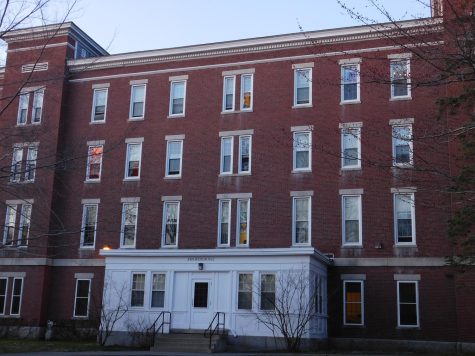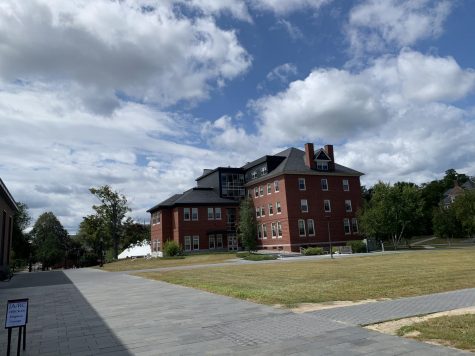The Connection between Protest and Commons
It is a testament to how awful this year has been that the campus protests seem like ages ago. Lest we forget, we had an actual walk out arranged a day ahead of Halloween on campus. It wasn’t nearly as impressive as the protests at Middlebury or Yale, but it was something.
Sometimes, the ‘choices’ we make to act are better than overt neglect. A well circulated poster from the @batesstudentgov Instagram handle read, “Silence is Violence.” This article isn’t specifically about my opinions on the matter of the protest, but the reader should know I was conflicted about it. I engaged some people personally (including the chief organizers) to discuss the merits of boycotting class on the 30th. And while the exhausting ‘he said, she said’ is not worth iterating, in a last ditch effort to consolidate an agreement in our debate, I offered to sleep in for my 8 am. Which, my interlocutor seemed to obliquely approve of. As I went to bed on Oct. 29, I couldn’t help chuckling to myself and a friend: it is terribly convenient one can both protest structural bigotry and catch up on some much needed sleep at the same time. Felt like a funny ‘choice.’
I promise to come back to the protests eventually. But first, consider General Tso’s Chicken: Deep fried, sweet chicken served with freshly boiled jasmine rice and soy sauce. I join a large number of fellow Bobcats in proclaiming it to be a Commons favourite, proven by the long queues in Commons on Wednesday nights. In fact, when I’m away from Bates, part of what I will nostalgically recall is the Wednesday night dinner menu.
Now some might disagree: They will say it is the Hamburger Fridays, or the BBQ Pizza Sundays, or the Pad Thai Tuesdays. Regardless, everyone has a favorite menu day. What is more interesting about Wednesday night’s food, though, is that while General Tso’s chicken is reliably good, the jasmine rice is always a little too sticky. It’s undercooked or overcooked. It’s cold or falling apart. I find that the rice more often than not can serve as the spoiler. And while it’s true everyone has a favorite Commons day, what is more true is that everyone has a Commons complaint.
You hear about it at food gatherings, dinner tables, club meetings, or even in small talk in elevators. An indisputable fact about Bates campus life is that Bobcats love to hate on Commons. It transcends groups that otherwise will never mix: upper class, lower class, athletes, international students, democrats, libertarians, and republicans. It’s beautiful, really.
But when you think about it for more than two minutes, you realize that the one opinion that we seem to universally agree upon is the most ridiculous, out of perspective notion, by any metric. Bates has some of the best college food in the whole country, and by extension in the whole world. Niche’s 2021 college food rankings puts Bates at number 10 among all US colleges. If food here sucks, food at, say, the University of Southern Kentucky must really, really suck. They probably have to skip meals and starve to sleep. It must be carnage out there! Truth is, whether we acknowledge it or not, Bates invests a lot in its dining hall to spit out the food we are used to; Justified or not is a separate question.
Let’s momentarily shift our focus to a different New England, liberal, elite college dining hall. Gordon Commons, at Vassar College, is in one respect very similar to our Commons, in that it attracts a lot of scrutiny from its student body. But that’s where the resemblance ends – because apparently the food at Vassar actually sucks, and not in the elitist out of touch way we complain about ours. Students complain about finding industrial sized staples in their spinach kale stir fry. Others complain about lack of variety of taste. And a common complaint appears to be that the food causes indigestion. Nothing that Bates can lay claim to. The food there, based on student reports, is genuinely bad. And the aforementioned Niche rankings reflect that by putting it at 426 among US colleges, just 416 ranks below Bates.
But you must be confused: why am I riffing on about how great Bates’s food is? And how does this have anything to do with the protests? Only in a very important way! But hold on for a second. It is a curious fact about Bates that we do so well at food compared to our friends down in New York, especially given that we have less than a third of their endowment. Food after all, is an investment. If you end up doing so poorly at it, one ought to ask: where is the money going? Fortunately for Vassar, there is a very direct answer.
Let’s think about this. You now know that on your next visit to Vassar’s campus, you will skip lunch. But what else do you stereotypically know about Vassar? If you spend any time reading up on small college politics, the answer will jump out to you: Vassar is much more equitable. The campus feels more inclusive. It is less divided into groups along the lines of class. It gives me no pleasure to say this, but it has an altogether different vibe from Bates. Before you jump on me and say that this sounds all too subjective, let me point to an important statistic. When it comes to understanding how much a school does for less privileged students, perhaps the most important statistic is the New York Times access index of low-income students. You can pull it up yourself.
The page explains that it “measures the top colleges’ efforts on economic diversity. It’s based on the share of the students who receive Pell grants [a federal program that aids families typically making less than $70,000]; the graduation rate of those students; and the price that colleges charge both low – and middle-income students.” Vassar is number 11 on their rankings. Bates is at 107. Just 96 ranks below.
The ranking takes into account the respective endowments of colleges. So doing well doesn’t depend on the money a college has – it depends on the ‘choices’ each college makes. It’s not as if Vassar was all that great a little while ago. Back in 2007, only 12% of students at Vassar were Pell Grant Recipients. Then, they started revamping their aid structure to incorporate social and racial diversity. That figure jumped up to 23% within a decade.
During the same period, Bates was revamping its dining hall structure to create New Commons as it stands today (in all of its postmodern architectural glory). You can find a video on YouTube of Bates’s former President talking up this new building: “It’s an extension of the classroom, where our students can congregate informally to share their ideas”
It’s unfortunate that most of the congregation remains divided along lines of structural inequality. The money we could have spent on making Bates more accessible for people who couldn’t afford it, we instead funneled to a mega dining project to attract more privileged students. ‘Choices’ matter. Think about that the next time you complain about food at Commons.
Let’s go back to the protestors. Think about what they were protesting, and think of how naïve it can all sound on a larger scale. You will find many of them complaining about structural bigotry, and in the next breath, complaining about the quality of the food at Commons. But I have a strange affection for the ways of the protestors, and their optimism for change. So I grant them that it might very well be a net positive to spend our energies on the sparing Trump apologist. It’s not immediately obvious to me, but I’m open to the idea. But with structural problems in the cards, we have bigger fish to fry. And the faster we get to them, the better. So, let’s talk about structural bigotries instead. Ergo, let’s talk about food. Yes, food.
A major portion of the arguments presented here were appropriated from Season 1, Episode 5 of the ‘Revisionist History’ podcast, where the host creates a similar dichotomy between Bowdoin and Vassar. I will strongly encourage the reader to explore that podcast.











